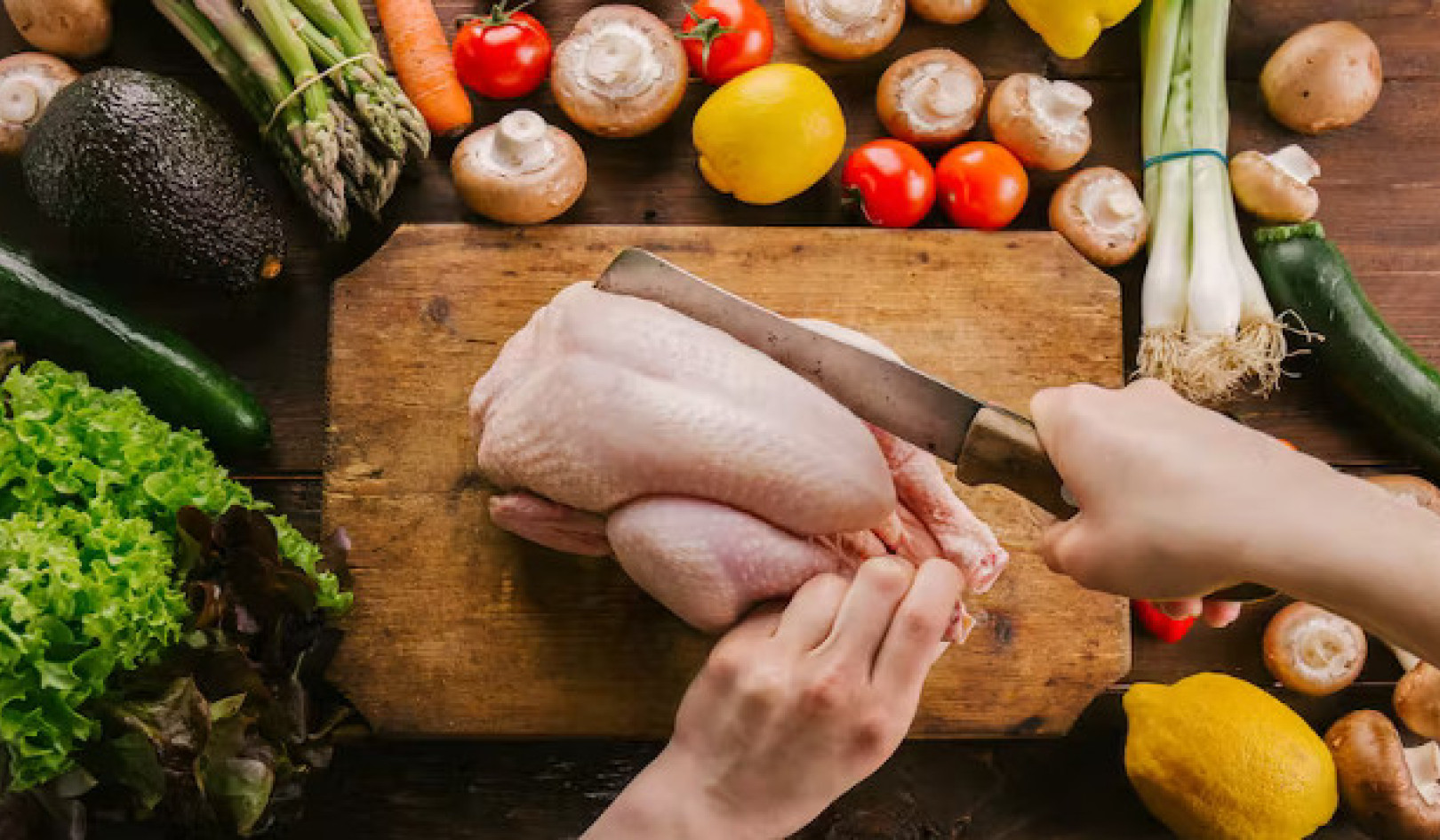
Sandy dieted for six years without lasting results. She’d go from one system to the next and any amount of weight she lost would quickly find its way back on. She complained of ongoing gastric reflux--heartburn--and bouts of overeating.
She lived in a relentless battle with food that consumed a significant chunk of her life energy. Despite a clean bill of health from her doctors, she was convinced that her problem was a sluggish metabolism. She was tired of struggling with food and exercise but didn’t know which way to turn.
In less than six weeks’ time working together, Sandy lost fifteen pounds and within four months she was a total of forty-five pounds lighter while eating more fat and exercising less. Her war with food was over, and she finally had what she wanted. Here’s what she did.
Focus on Quality
First, we focused on quality. When we met, Sandy’s diet consisted of very little fresh or homemade food. She ate lots of artificially sweetened and mass-produced products with poor-quality fat; she ate almost no low-toxic, nutrient-dense foods. We improved the quality of Sandy’s diet. In doing so, the quantity of food she ate naturally began to diminish.
When the body fails to receive the quality nutrition it desires, it isn’t always smart enough to call for better food--it screams “more food!”
Focus on Rhythm
Next, we looked at rhythm. Sandy had been skipping breakfast, eating a small hurried lunch, and having a big dinner after work sometime around eight o’clock. Like Sandy, what most people don’t realize is that the body metabolizes food most effectively at mid-day, specifically at the point when the sun is highest in the sky.
Research shows that we burn calories best at lunch. Late evening and early morning hours are the least efficient times for metabolizing food. Sumo wrestlers don’t gain weight by eating tons of Ben & Jerry’s ice cream; they eat the same rice, vegetables, and sushi as their fellow countrymen. The difference is that they eat this food in great quantity and late at night.
Sandy didn’t realize that she was on the “Sumo diet.” I recommended she eat a real breakfast, a good-sized lunch, and a small dinner. She was now eating more calories but concentrating them at the time of peak metabolic efficiency. And by taking more time to eat, she was literally mixing more oxygen with her meal, resulting in greater calorie burning capacity and more robust digestion.
Focus on Relaxation and Breathing
Next, because Sandy described herself as a fast eater, I asked her to relax and breathe. There’s something scientists call the cephalic phase digestive response (CPDR). Cephalic means “of the head.” The cephalic phase digestive response is a fancy term for the body’s experience of the taste, aroma, satisfaction, visuals, and overall pleasure of a meal. Depending upon which research study you consider, anywhere from 20 to 80 percent of our calorie-burning power, digestive power, and assimilation of specific nutrients comes directly from CPDR--the “head phase” of digestion.
By rushing through her meals Sandy significantly diminished her metabolism. Her rapid-fire eating was locking her body into a stress response, which dramatically decreases digestion and calorie-burning ability. After incorporating simple deep breathing exercises, the increased oxygenation and blood flow to her digestive system stimulated thermic efficiency--her calorie-burning power. Breathing and relaxation also reversed her stress-induced digestive shutdown, which completely cleared her chronic gastric reflux.
Focus on Pleasure
After these successes, I asked Sandy to do something that initially seemed beyond reason. I suggested she enjoy eating and allow herself to feel nourished and let go of any guilt no matter what she ate. This was especially difficult for Sandy because she had spent much of her adult life fighting food.
For the first time ever, Sandy was truly considering the possibility of not inflicting pain upon herself but inflicting pleasure instead. Indeed, pleasure is a powerful metabolizer that increases oxygenation and blood flow and decreases the production of cortisol and insulin, which ultimately helps to burn fat and build muscle. It also induces parasympathetic nervous system dominance, which activates full digestive metabolism and calorie burning power.
Focus on Awareness
Finally, we dealt with Sandy’s biggest challenge--overeating. To her surprise, I explained that she had never been able to conquer her overeating problem for one simple reason: the problem didn’t actually exist. In my experience, I’ve learned that about nine out of ten people who claim to be overeaters really have a different issue--they don’t eat when they eat. Because of a deficiency of a key universal metabolizer--awareness--many of us psychically “doze off ” while we eat. Failing to notice our food, we completely bypass the body’s satiation mechanism. The result is that we hunger for more.
As you may recall from junior high school biology class, all organisms on the planet--be they amoeba, lizard, lion, or human being--are programmed for two things in common: to seek pleasure and to avoid pain. When we eat, we are pursuing the pleasure of food and avoiding the pain of hunger. If we fail to pay attention to the food, the brain interprets this missed experience as hunger and signals us to eat more. We mistakenly think our problem is one of willpower when instead we simply need to be more present when we eat.
The net result of Sandy’s work was, for her, astounding. She catalyzed a permanent change in weight and felt energized with food for the first time since her teen years. Slowing down and working with the wisdom of the body enabled her to increase her metabolic speed.
©2005, 2015 by Marc David.
Reprinted with permission of the publisher,
Healing Arts Press. www.InnerTraditions.com
Article Source
The Slow Down Diet: Eating for Pleasure, Energy, and Weight Loss
by Marc David.
 In this 10th anniversary edition, Marc David presents a new way to understand our relationship to food, focusing on quality and the pleasure of eating to transform and improve metabolism. Citing cutting-edge research on body biochemistry as well as success stories from his own nutritional counseling practice, he presents an eight-week program that allows readers to explore their unique connection to food, assisting them in letting go of their fears, guilt, and old habits so they can learn to treat their bodies in a dignified and caring way.
In this 10th anniversary edition, Marc David presents a new way to understand our relationship to food, focusing on quality and the pleasure of eating to transform and improve metabolism. Citing cutting-edge research on body biochemistry as well as success stories from his own nutritional counseling practice, he presents an eight-week program that allows readers to explore their unique connection to food, assisting them in letting go of their fears, guilt, and old habits so they can learn to treat their bodies in a dignified and caring way.
Click here for more info and/or to order this book:
http://www.amazon.com/exec/obidos/ASIN/1620555085/innerselfcom
About the Author
 Marc David, a nutritionist with a master's degree in the psychology of eating, consults with corporations and nonprofit organizations in nutrition, food, and holistic health. He has been a leading nutrition expert at Canyon Ranch for more than 10 years, a workshop leader at Kripalu Center for Yoga and Health, and is the author of Nourishing Wisdom and The Slow Down Diet.
Marc David, a nutritionist with a master's degree in the psychology of eating, consults with corporations and nonprofit organizations in nutrition, food, and holistic health. He has been a leading nutrition expert at Canyon Ranch for more than 10 years, a workshop leader at Kripalu Center for Yoga and Health, and is the author of Nourishing Wisdom and The Slow Down Diet.
Books by this Author:
at InnerSelf Market and Amazon
























